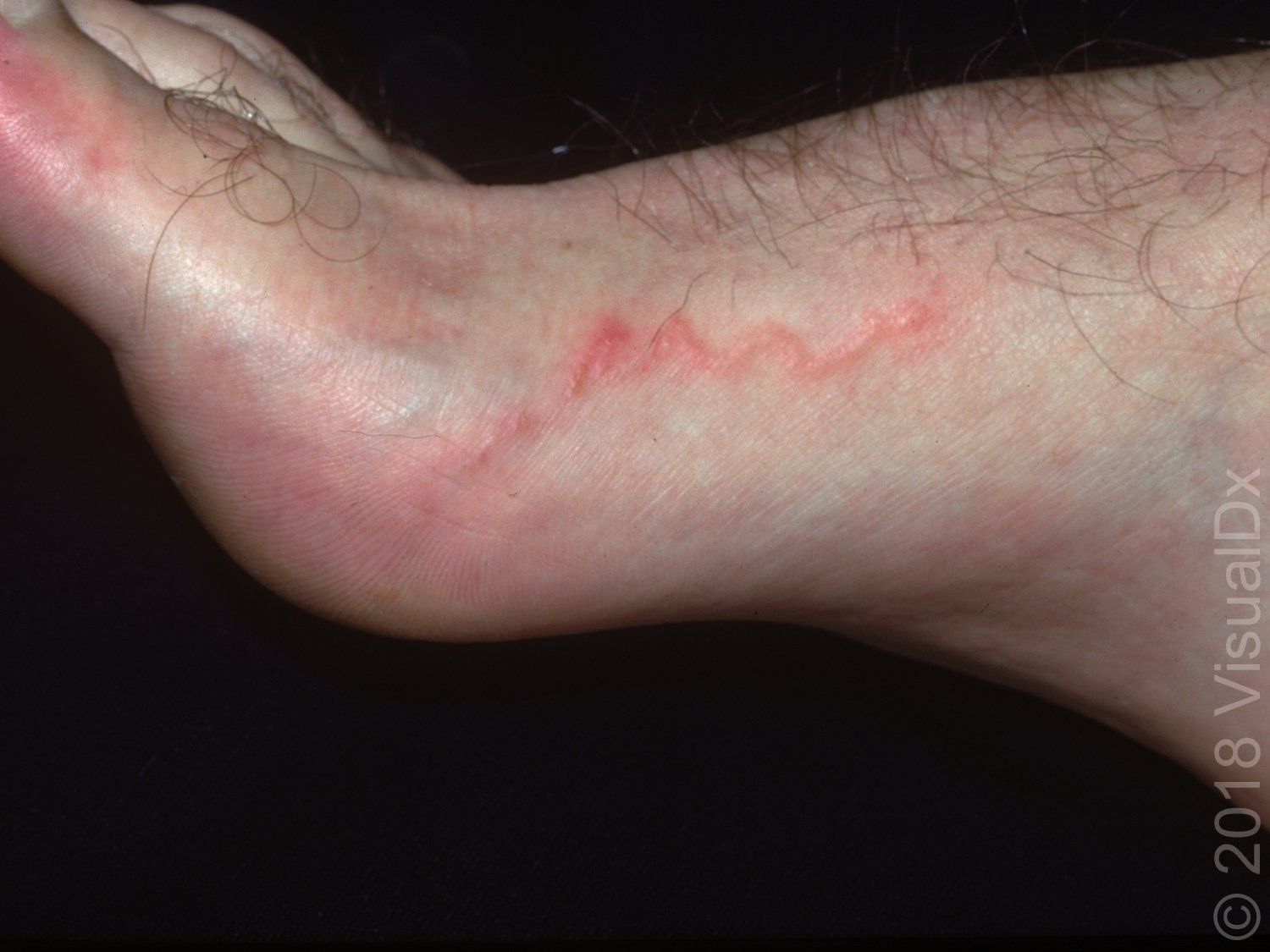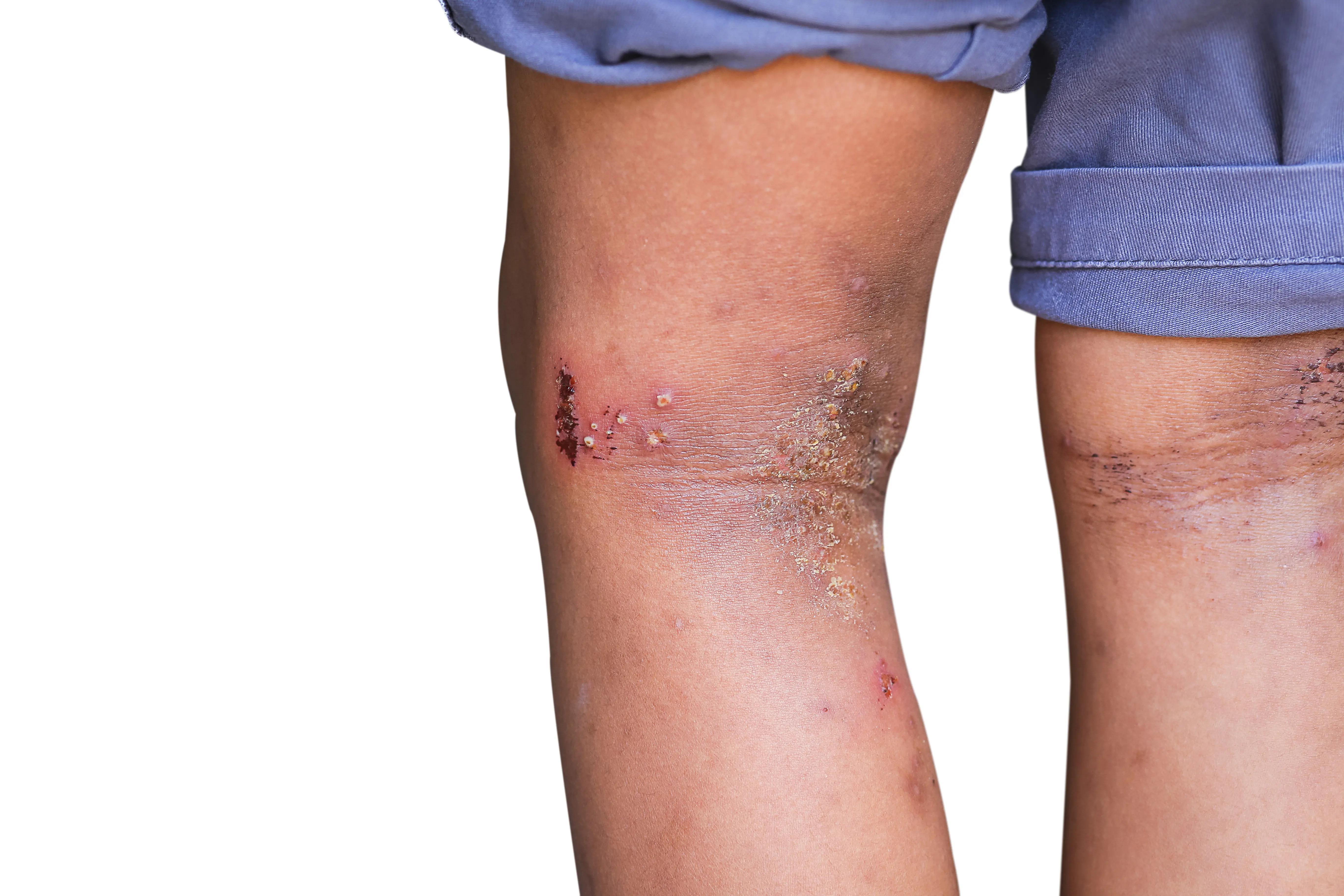- Case-Based Roundtable
- General Dermatology
- Eczema
- Chronic Hand Eczema
- Alopecia
- Aesthetics
- Vitiligo
- COVID-19
- Actinic Keratosis
- Precision Medicine and Biologics
- Rare Disease
- Wound Care
- Rosacea
- Psoriasis
- Psoriatic Arthritis
- Atopic Dermatitis
- Melasma
- NP and PA
- Skin Cancer
- Hidradenitis Suppurativa
- Drug Watch
- Pigmentary Disorders
- Acne
- Pediatric Dermatology
- Practice Management
- Prurigo Nodularis
- Buy-and-Bill
News
Article
Image IQ: Foot and leg lesions that resemble a red line
Author(s):
Pruritic skin lesions on the foot and lower leg that look like red lines in a serpiginous configuration. What’s your diagnosis?
Pruritic skin lesions on the foot and lower leg that look like red lines in a serpiginous configuration. What’s your diagnosis? (Photo courtesy of VisualDx 2018)

A 45-year-old man went to his primary care doctor with pruritic skin lesions on his foot and lower leg. The lesions looked like manually drawn red lines on the leg in a serpiginous configuration. He couldn’t recall doing anything out of the ordinary other than a trip to Puerto Rico three weeks earlier where he frequented the beach.
What’s your diagnosis?
A. Strongyloidiasis
B. Cutaneous larva migrans
C. Scabies
D. Gnathostomiasis
Click on the next page for the answer.
The correct answer is B: Cutaneous larva migrans
Cutaneous larva migrans (also known as creeping eruption, creeping verminous dermatitis, sandworm eruption, plumber's itch, and duck hunter's itch) is a parasitic infestation of the epidermis. It is caused by larvae of hookworms that infect domestic dogs and cats or humans (Ancylostoma braziliense, Ancylostoma caninum, Ancylostoma duodenale, and Necator americanus). It is usually acquired by walking barefoot on soil or sand contaminated with dog or cat feces containing the larvae. After contact with the skin, larvae penetrate the epidermis and undergo a prolonged migration through the epidermis in a serpiginous, or "snake-like," fashion. The infection is almost always confined to the outer most layers of the skin (ie, the epidermis) and very rarely penetrates to subcutaneous tissues and disseminates hematogenously.
Clinically, the cutaneous findings are characterized by intensely pruritic serpiginous tracts localized primarily to the ankles and feet; however, other areas of the body that have contacted infected soil may be involved. Itching begins within hours to days of exposure, and migration usually occurs after 4 days. Lesions are often edematous, erythematous, and may have associated vesicles and bullae. The majority of patients present with more than one lesion. Migration of larvae begins approximately 4 days after entry and then progresses horizontally about 1-2 cm daily. Since the human is a "dead-end" host, the larva typically spontaneously resolve, although lesions may persist for up to a month. Treatment is often undertaken for relief of intense pruritus and the possibility of bacterial superinfection. The disease is most commonly found in warm climates, with high incidence observed in the southeastern United States, Central and South America, Africa, and the Caribbean.
Although rare, larvae can migrate beyond the skin, causing systemic disease characterized by pulmonary infiltrates and peripheral eosinophilia, termed Loeffler syndrome.
ICD10 Code: B76.9 – Hookworm disease, unspecified
For more information about this quiz â specifically, differential diagnoses and pitfalls, clinical tests, management pearls, therapy and a complete list of references â visit VisualDx online.






